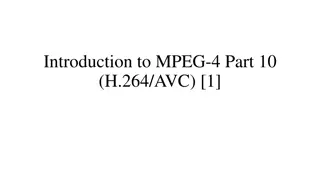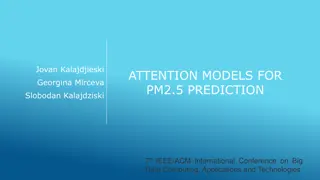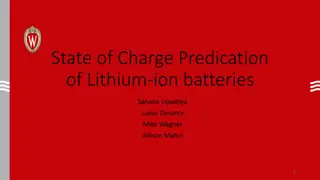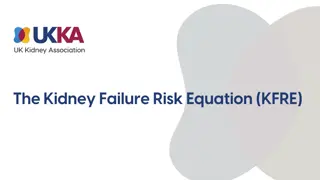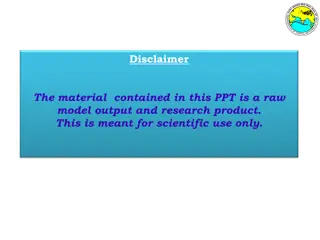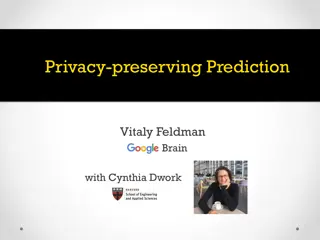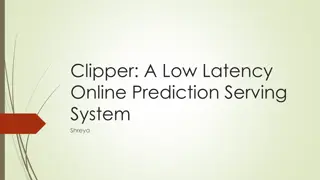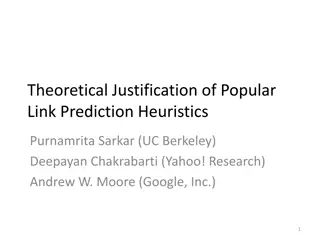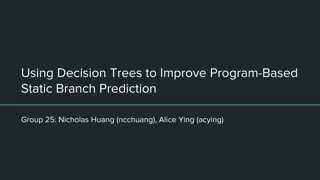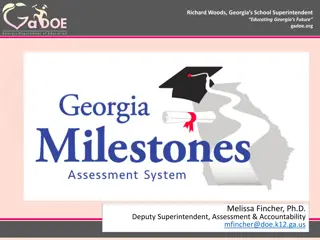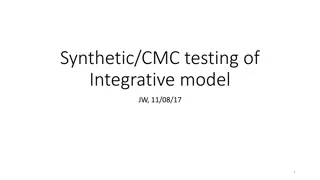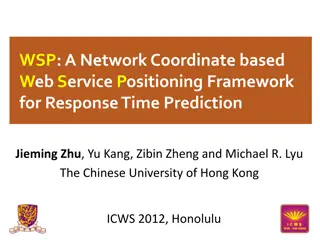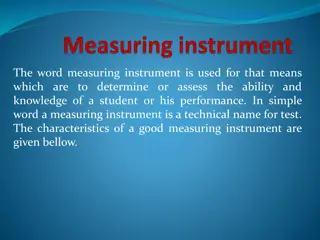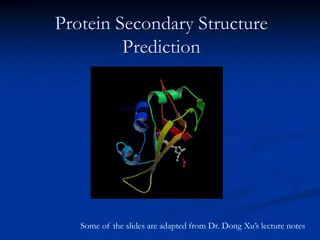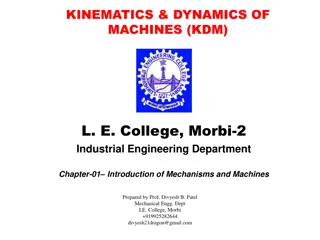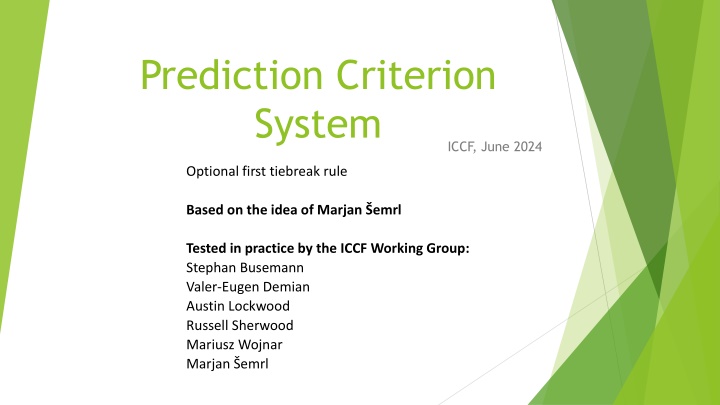
The Prediction Criterion System in Correspondence Chess - June 2024
"Explore the innovative Prediction Criterion System introduced by the ICCF for correspondence chess. Learn how it adds a competitive element, the customizable aspects, and the advantages it offers in tournament play, tested and endorsed by the ICCF Working Group."
Download Presentation

Please find below an Image/Link to download the presentation.
The content on the website is provided AS IS for your information and personal use only. It may not be sold, licensed, or shared on other websites without obtaining consent from the author. If you encounter any issues during the download, it is possible that the publisher has removed the file from their server.
You are allowed to download the files provided on this website for personal or commercial use, subject to the condition that they are used lawfully. All files are the property of their respective owners.
The content on the website is provided AS IS for your information and personal use only. It may not be sold, licensed, or shared on other websites without obtaining consent from the author.
E N D
Presentation Transcript
Prediction Criterion System ICCF, June 2024 Optional first tiebreak rule Based on the idea of Marjan emrl Tested in practice by the ICCF Working Group: Stephan Busemann Valer-Eugen Demian Austin Lockwood Russell Sherwood Mariusz Wojnar Marjan emrl
CONTENT What is the Prediction Criterion System? How does it work? Details and Clarifications Advantages and Weaknesses Prediction Test tournament ICCF Server Implementation ICCF Working Group Opinions 2
What is the Prediction Criterion System? Analyze in Advance System Prediction Criterion is not a Guess the Move system. It is an Analyze in Advance system. Analyzing in advance features: The longer and more accurate these analyzes are, the better for the player. The player takes full responsibility for these analyses, because he enters them as conditional moves in one line. It reintroduces the human factor to correspondence chess, factor that has been lost to computer technology for a decade plus. 3
New Competitive Element Due to the enormous increase in the number of draws, we are faced with a situation where it is often impossible to determine the ranking of players in the final tournament table. As a result, correspondence chess is becoming less appealing from a competitive point of view. Prediction Criterion introduces a new additional competitive element to the correspondence chess game. It is consisting of prediction points that could be the first tiebreak criterion in the case of equal number of basic chess points. The prediction points are not a coincidence, nor the result of luck. They are the result of hard analytical work during the course of the game. 4
How does it work? Fully Customizable System At the start of a tournament using the Prediction Criterion System, the TO determines the value of two variables: PC1 Sequence number of the move when the prediction points start to add up. PC2 Sequence number of the move when prediction points stop adding up. For any moves whose sequence number is less than PC1 or greater than PC2, any successful conditional moves are not counted. These variables give the system flexibility and easiness to adapt in practice. 5
Testing => works best between moves 11 and 40 Testing so far has shown that the following values of variables are very suitable: PC1 = 11 PC2 = 40 Reasoning: The chess game is actually in its essential phase during this interval. Adding prediction points before move 11 makes less sense because the players are forced to deviate from their well-established opening repertoire. Also, it looks like white has more equally good options than black in the opening and thus a certain advantage. Adding prediction points after move 40 makes less sense because at that time, there is usually an endgame on the chessboard, which most often offers many different possibilities, all of which lead to the same result (draw) and prediction would depend too much on luck. 6
How does the system work? PART I. In each game, a prediction performance account would be opened for both white and black. The balance on both accounts at the start would be 0 points. At each move between PC1 and PC2, the player can play one or more conditional moves in addition to the basic move. If the opponent accepts the conditional move, the player receives 1 point in his account. 7
How does the system work? PART II. When the game is finished, the winner of the prediction is determined. It is the player who scored more points in his prediction performance account for the game. If the result of the prediction is equal, the player with black pieces is declared the winner. The prediction winner receives 1 point for the first "tiebreak" criterion in the tournament table. At the end of the tournament, between the players with the same number of chess points, the player with more points from the prediction criteria will be ranked higher. 8
Details and Clarifications Why is black declared the prediction winner if the result of prediction is equal? Reasons for not having a draw in the Prediction Criterion score: The combativeness and persistence of the players increases and any possible collusion is reduced, White has the first move advantage in the game and this rule can be a small compensation, White starts to enter conditional moves first and again this is a small compensation. 9
Why must any player enter at least one conditional move with each move? This only applies to moves between and including the variables PC1 and PC2. With this we achieve: The player does not forget that he is in the scoring prediction zone, since the server warns himof it. The player does not ignore the system but actively participates in it. In case he really can't decide on the next (conditional) move, he can pick the most unlikely response move of the opponent and respond to it. 10
The most important tip is the following: ENTER THE LONGEST POSSIBLE CONDITIONAL STRING AS YOU CAN! Why? You will not be able to enter the first next move after the string as a conditional and you will not have a chance to win a point! Let's look at 2 examples. For ease of understanding, we will use the first moves. Example 2: White plays 1.e4 and enters the conditional: 1... e5 2.Nf3 Nc6 3.Bb5 Nf6 4.d3 Bc5 5.c3 0-0 6.0-0 d6 7.Nbd2 Black plays: 1... e5 2.Nf3 Nc6 3.Bb5 Nf6 4.d3 Bc5 5.c3 0-0 6.0-0 d6 7.Nbd2 Ne7 Example 1: White plays 1.e4 and enters the conditional: 1... e5 2.Nf3 Black plays 1...e5 2.Nf3 Nc6 White won 1 point but had no chance to predict the move 2... Nc6! White won 6 points and again had no chance to predict 7...Ne7! The difference is obvious! 11
Why does the Prediction Criterion deserve to be the first tiebreak criterion? This is the only criterion that is the result of hard work, many hours invested in analysis, chess knowledge, knowledge of the opponent's psychology, etc. All other criteria depend mostly on luck, mistakes, resignations of opponents, and other similar factors over which we have no influence. 12
Advantages and Weaknesses Advantages of the Prediction Criterion system An additional goal of the correspondence chess game would be introduced, which would not be random but would have to be fought hard for. This would essentially bring back the competitive interest that was lost in the flood of draws. The correspondence game would become faster due to the mandatory conditional moves and procrastination would be significantly more difficult. Players would be interested in finding new paths outside of the standard chess theory because they would want to surprise their opponent. Players would be interested in looking for moves outside of the computer's suggestion because they would want to surprise their opponent. THE PREDICTION CRITERION rule would return competitive interest to correspondence chess without the slightest deviation from the generally recognized rules of the chess game. 13
Potential weaknesses of the Prediction System: In the opening, white may have several equivalent good moves (solved by variable PC1). In the endgame, the system becomes a game of chance (solved by variable PC2). In the initial phase of the game, the players need more time to think, but later significantly less. (this can be solved by adjusting the time management system, e.g. 100+3 days, elimination of duplication after the 20th move, Triple Block system, etc.) The opponent offers a draw within the conditional string (solution within the technical implementation). 14
Prediction Test tournament LINK https://www.iccf.com/event?id=103317 All games so far have ended in a draw! 15
Austin programmed an additional table as a temporary solution: LINK https://predictionmoves.z35.web.core.windows.net/103317.html Here you can also see the results according to the Prediction Criterion! The PS column is the first tiebreak criterion and makes a clear difference between the players. 16
ICCF Server Implementation The implementation on the ICCF server The final solution on the ICCF server will not need an additional table. The solution will have to contain: Recognizing moves that were played as conditional moves. Time stamps may not be the best solution for all cases. Keeping the current prediction result on the screen where the game is played. An additional column in the tournament table, where the sum of prediction wins for finished games will be displayed. Considering the prediction score as the first tiebreak criterion. Solving borderline cases (e.g. offering a draw within the opponent's prediction series). 17
ICCF Working Group Opinions Marjan emrl: Correspondence chess using the Prediction Criterion system regains the human factor it had 15 and more years ago. No more just copying the game to Chessbase, turning on the engine, walking the dog for a few hours, and then copying the calculated move to the ICCF server. These are now long hours of work and analysis. After many years, I now have my games and positions in may head again. And when the opponent's answers come in, I am so excited that I hardly dare to look at them. 18
Special thanks go to: Austin Lockwood, who made it possible to play on the ICCF server with temporary technical support and was the TD of the tournament. Valer-Eugen Demian for consultation and help in preparing the material. Stephan Busemann for helpful feedback and ideas. Stephan Busemann, Russell Sherwood, Mariusz Wojnar and Valer- Eugen Demian for playing in the test tournament. 19


